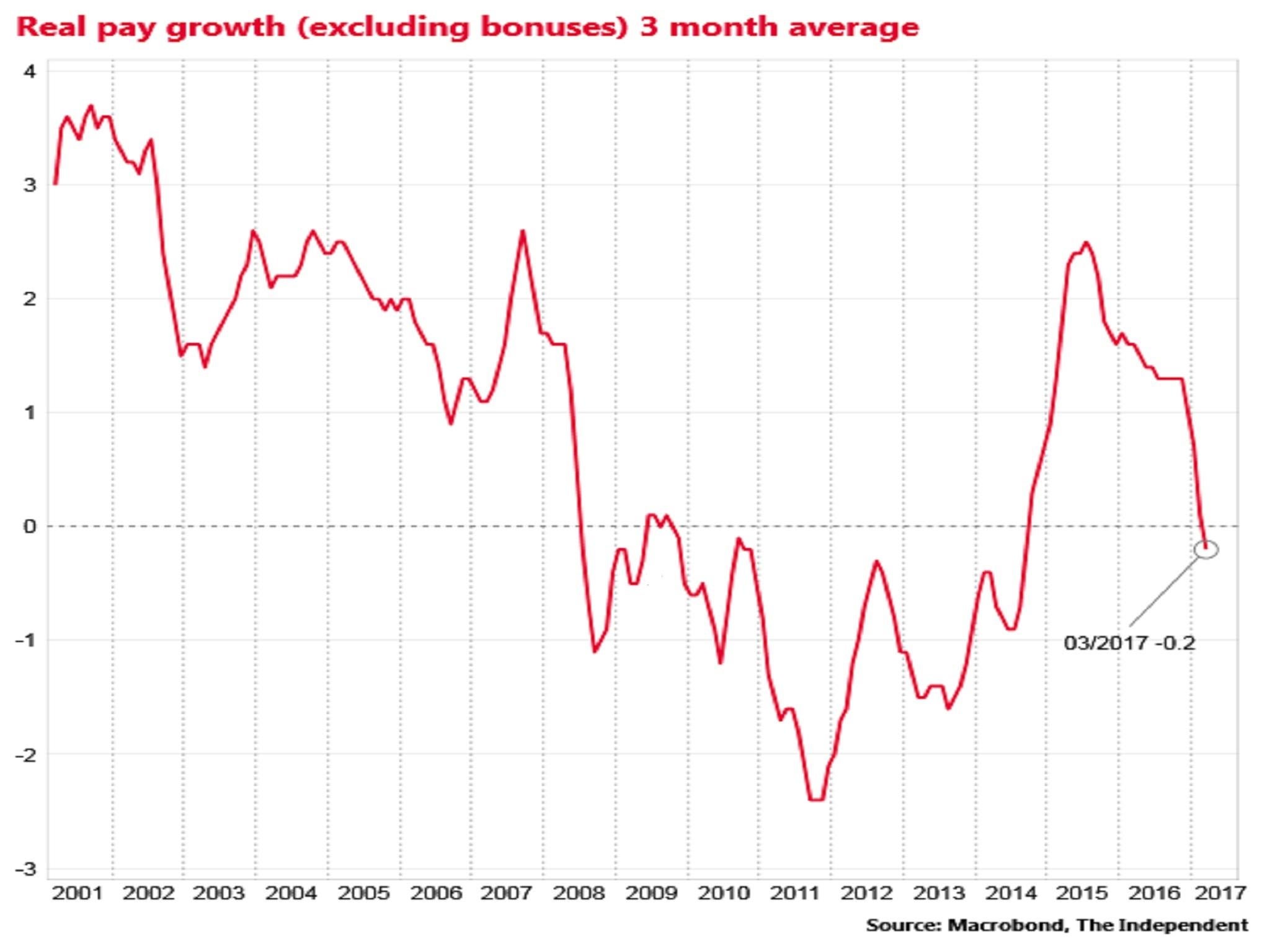Real wages are now falling, the Office for National Statistics has confirmed.
Nominal total average wages grew at an annual rate of 2.4 per cent in the three months to March, the agency reported on Wednesday.
That was fractionally higher than inflation in March of 2.3 per cent, but on Tuesday the ONS reported that prices were up 2.7 per cent in April, meaning that inflation-adjusted wages are now likely to be negative for the first time since 2014.
Excluding bonuses, wages were up just 2.1 per cent in the three months to March, below City analysts' expectations of a 2.2 per cent expansion, and meaning on that on this metric real pay fell by 0.2 per cent.
The spike in inflation reflects the 13 per cent slump in the value of the pound against the dollar since last June's Brexit vote.
"The fact that wage growth is not keeping up with price inflation does not bode well for consumer spending - which has been a key factor contributing to UK economic growth in recent years," said Andrew Sentance, senior economic adviser at PwC.
Nominal wage growth also remains well below its pre-financial crisis rates, and last week the Bank of England suggested that employers may be holding off from increasing wages due to uncertainty about Brexit.
However, the Bank also projected nominal average wages to pick up to a growth rate of 3.5 per cent next year.
"Given that uncertainty related to the Brexit talks is likely to weigh on investment and hiring decisions over the next couple of years, we think that this assumption might be optimistic", said James Smith, an economist at ING.
Wages apart, the jobs market continued to expand with the number of people in work rising by 122,000 in the three months to March, taking the employment rate to a new record high of 74.8 per cent.
The number of unemployed fell 53,000, taking the headline jobless rate down from 4.7 per cent to 4.6 per cent, its lowest since 1975.
However, productivity slipped back again.
The ONS estimates that output per hour fell by 0.5 per cent in the first three months of the year, following a 0.4 per cent expansion in the final quarter of 2016.
That means the level of UK productivity is now below its level in the final quarter of 2007, spelling almost a decade of stagnation.
GDP growth slowed to 0.3 per cent in the first quarter while total hours worked increased by 0.8 per cent.
Economists warn that Brexit is likely to exacerbate the the UK's productivity problem.
"A major risk is that prolonged uncertainty and concerns over the UK’s economic outlook ends up weighing down markedly on business investment and damages productivity. This could be compounded if foreign companies markedly reduce their investment in the UK and this dilutes any beneficial spill-over of skills and knowledge," said Howard Archer of IHS Global Insight.
Subscribe to Independent Premium to bookmark this article
Want to bookmark your favourite articles and stories to read or reference later? Start your Independent Premium subscription today.


Join our commenting forum
Join thought-provoking conversations, follow other Independent readers and see their replies